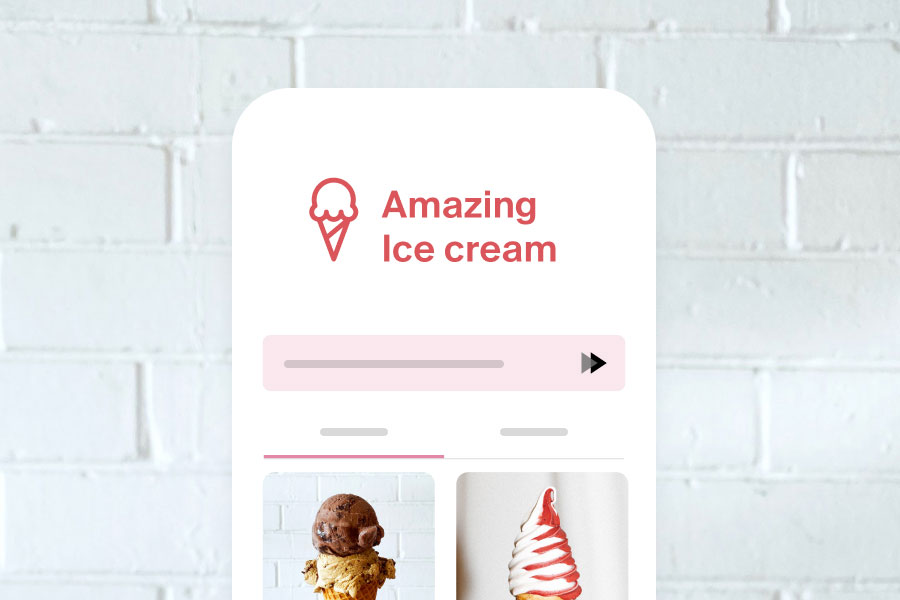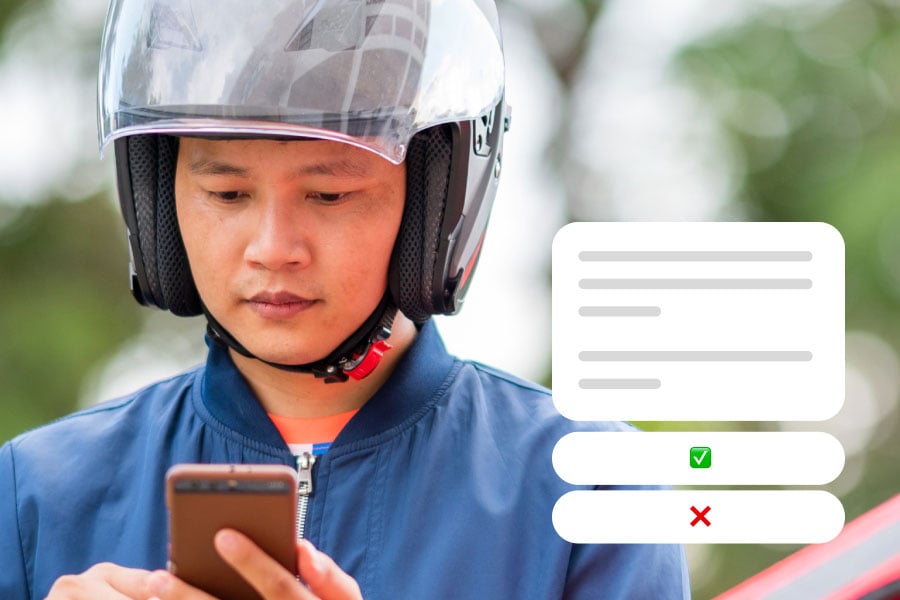Featured
The good and the bad of working with online marketplaces
By Ibrahim Zaghw

For most restaurants, delivery is a cornerstone of the business. Not only does it increase a restaurant's sales, but, along with takeout, delivery also shapes around 60% of orders coming from millennials.
And, while the food delivery market has always been huge in the MENA region, it has more than doubled in size during the pandemic. This explosive growth can be explained by two complementary facts: On the one hand, everyone was trapped in their homes as they waited out the quarantine restrictions. On the other hand, the appearance and widespread of online ordering made the entire food delivery process so convenient and simple that it now takes a few buttons to get pizza dropped off at your doorstep within thirty minutes or less.
Even though there are many ways restaurants can satisfy online orders, one of the most prominent is through food delivery companies, such as Talabat, Deliveroo, ElMenus, Hunger Station, and Mrsool. These companies, also known as aggregators, act as market places where end consumers can find and order from different restaurants.
So, with that in mind, what do restaurants have to look forward to if they partner with an aggregator? Is it all sunshines and rainbows, or are there negatives that restauranteurs should be aware of?
To help you see the whole picture, here is a quick list of pros and cons that can help put things in perspective.
Pros
1. Discovery
One of the biggest advantages offered by food delivery companies is that they let customers discover your restaurant, making these companies a sort of extra marketing channel.
For instance, an app like Talabat has a marketplace that is brimming with restaurant partners. So, when an end customer is browsing through the available options, they might come across your place and realize that your burger with Shiitake Mushrooms is exactly what they want for lunch. Over and above, when said customer sees the limited time offer you have going on, they rush to hit the "Place Order" button and watch as the little driver maneuvers the map and makes their way to the customer's home.
Realistically speaking, the customer from the above example might spend the rest of their lives never having heard of you had it not been for the food delivery company.
So, discovery is a big plus when it comes to aggregators, and it benefits small restaurants and those starting out the most.
In other words, if you are at the beginning of your journey and have yet to build your social media followership, then food delivery companies can be a great way to build momentum and get things rolling.
2. Ease of logistics
Another benefit of food delivery companies is that many of them provide actual delivery options.
Put differently, if you don't have couriers working for you right now, most food delivery companies will supply you with their own drivers who will pick up the food from your restaurant and deliver it to the customer.
This removes a load off your back as logistics can be a hassle for most restaurant owners. Additionally, many restaurants start with a dine-in location, planning to introduce delivery later.
So, it can be a real plus to have another company worry about hiring drivers, arrange their work schedule, and ensure they are reliable.
3. No need for marketing investment
Although you get more exposure through food delivery companies, you don't have to pay anything until someone places an order. So, you only pay for fulfilled orders.This minimizes the amount of risk you take when partnering with a food delivery company: Whereas marketing expenses always contain an element of risk because you are not sure of the ROI, working with a company like Deliveroo is much more clear-cut because you only pay when you have revenue coming your way.
Cons
1. Commissions
Despite food delivery companies charging you only when you get an order, the commissions they charge can be so high that it gets crippling. For some restaurants, the commissions can be as high as 30-35%, which will just eat a large chunk from the bottom line.
But, then again, this should come as no surprise: We just mentioned that food delivery companies minimize the risk you deal with by only charging you when you get an order. Did you think that avoiding risk would come cheap?
And, this issue gets worse when you realize that a healthy number of orders come from repeat customers, people who would have preferred ordering from you directly instead of going to a third-party service.
2. Control
Food delivery companies are controlling of their platform. They feel that every time a customer has a negative experience on their platform, this reflects negatively on them. So, they go to great lengths to curb any experience that can be deemed "negative."
For example, let's say that a customer sends your restaurant an order. However, the order isn't accepted within a certain amount of time because your restaurant manager is busy dealing with an issue in the kitchen. Due to your manager's oversight, the food delivery company may set your restaurant as "busy," stopping anyone else from sending you orders through their platforms. And, you will remain "busy" for a good chunk of time.
3. Limiting when it comes to drivers
If you rely on a food delivery company to provide drivers, you might occasionally get frustrated with the lack of available drivers, especially during rush hours.
To understand why, let's look at an example together:
We are going to imagine that you are working with Deliveroo, and you have them carry the load when it comes to delivery. This means that you rely on their drivers to deliver your food to your customers.
But, the problem is that you aren't the only one relying on these drivers; you are only one of several restaurants that needs these drivers to be quick and efficient. At the same time, there are only a limited number of available drivers to serve your restaurant as well as all of the others relying on them.
So, during peak times, the number of orders from all restaurants can exceed the number of available drivers, at which point the food delivery company has to intervene somehow.
One way a company like Deliveroo will intervene is by increasing the wait time, which will have a negative effect on your end-customer as they stay waiting for their food or, even worse, receive their food cold and soggy.
4. Limiting when it comes to delivery zones
We mentioned the problem of driver crunch above and saw how food delivery companies might attempt to solve it by increasing the wait time.
However, another way companies like Talabat try to solve this problem is by limiting the delivery zones accessible to you. It might not be clear how this solves the driver crunch issue, but the following example should clear everything up:
Let's imagine you deliver to 10 zones, with zone 1 being the nearest to you and zone 10 being the farthest. And, just for the sake of the example, we will say that it takes a driver less than 5 minutes to reach zone 1 from your restaurant, but it might take up to 30 minutes to reach zone 10.
Now, during peak times, food delivery companies care about the number of orders a driver can deliver within an hour. So, if a driver picks up an order from your restaurant and drops it off somewhere in zone 1, they can make this trip around 6 times per hour, which translates to 6 orders per hour.
Alternatively, if the same driver were to deliver to zone 10, they could only make that trip once per hour, bringing their total efficiency down to 1 order per hour.
So, from an efficiency standpoint, food delivery companies are happy limiting the delivery zones accessible to you, shutting off those farthest from you, which just increases the number of orders they process per hour.
Because of this, I could be your loyal customer, but seeing as I live a little far away from you, I will see your restaurant as busy most of the time on a food delivery company's platform. This might nudge me to order from someone closer to me, costing you an order that should have gone your way.
5. No sharing of data
Food delivery companies do not share data with restaurants. And, although you might see the name and phone number of your customers when you receive the order, this data will disappear as soon as you fulfill the order.
But, the main problem here is that many of those ordering are your loyal customers. So, aren't you entitled to that data?
From the food delivery company's perspective, they don't want you to have that data. After all, their business depends on people ordering through them, so the last thing they want is to enable you to build a direct relationship with your customers.
6. Catering to specific profiles
Food delivery companies work with some profiles better than others. For example, they are ideal for fast food restaurants and dessert shops.
However, they are ill-suited for catering companies and ready-to-cook vendors. One reason is that most end customers who browse these platforms are looking for something to eat right now. They are looking for something to satisfy their hunger, and the last thing on their minds is what to order for the party they are planning over the weekend.
Put differently, food delivery companies are perfect for people looking to make an impulse buy. But, they aren't as ideal when it comes to something more thought out.
Another problem is that food delivery companies usually limit the allowed preparation time. So, if it takes your business more than an hour to prepare something, the food delivery company might be displeased with that.
And, for a catering business, most orders will take more than an hour easy.
7. Problems with scheduling orders
Food delivery companies don't allow customers to schedule orders, which can be an essential feature for many of you.
For example, if I am preparing a graduation party for my younger brother, I might want to buy a celebration cake from one of you. But, to make sure there are no mistakes, I will probably book the cake ahead of time and schedule to have it delivered to me on the day of the party.
Unfortunately, none of this is possible through most food delivery companies.
Instead, as mentioned earlier, these companies are perfect for impulse buys. But, when it comes to fulfilling more planned-out orders, you might need to find another alternative.
8. Issues with customer loyalty
Most customers placing orders through the food delivery company become loyal to said company rather than to your restaurant. And, a big part of this loyalty comes from simple convenience: These customers have already saved their personal details and credit card information with the food delivery company, so the entire ordering process becomes simplified for them.
9. No control over end-customer experience
Since the food delivery company employs the couriers delivering your food, you don't have any control over the end-customer experience. As a result, if the driver takes too long to deliver the order or if they don't fasten it securely to their bikes, causing it to shake all over the place, you have no way of correcting the situation.
And, this problem becomes all the more serious when you realize that the end customer who has a negative experience will probably blame you instead of the food delivery company. So, they might never order from you again even though the whole thing was out of your hands.
So, what should you do?
Given the negatives, do we recommend avoiding food delivery companies?
Actually, no.
Food delivery companies offer strong benefits, which are invaluable to small businesses still starting out. However, if you are a more mature business with a sizeable social following, you might want to consider alternative online channels, including an online ordering platform.
To be clear, we are not advocating an either/or scenario. Instead, we recommend having more than one channel. You can use the food delivery platform to reach new customers, and you can have your own site to service your already loyal fans. This way, you will be getting the best of both worlds.
Contact Zyda today and discover how our solutions can help you stand out and succeed in the competitive online food market.




